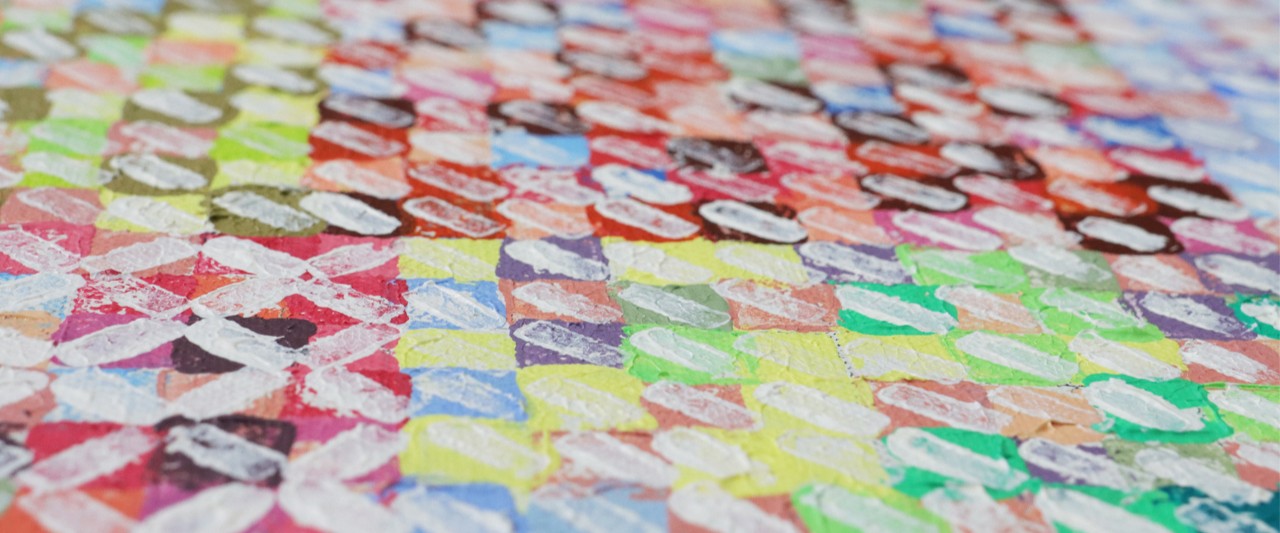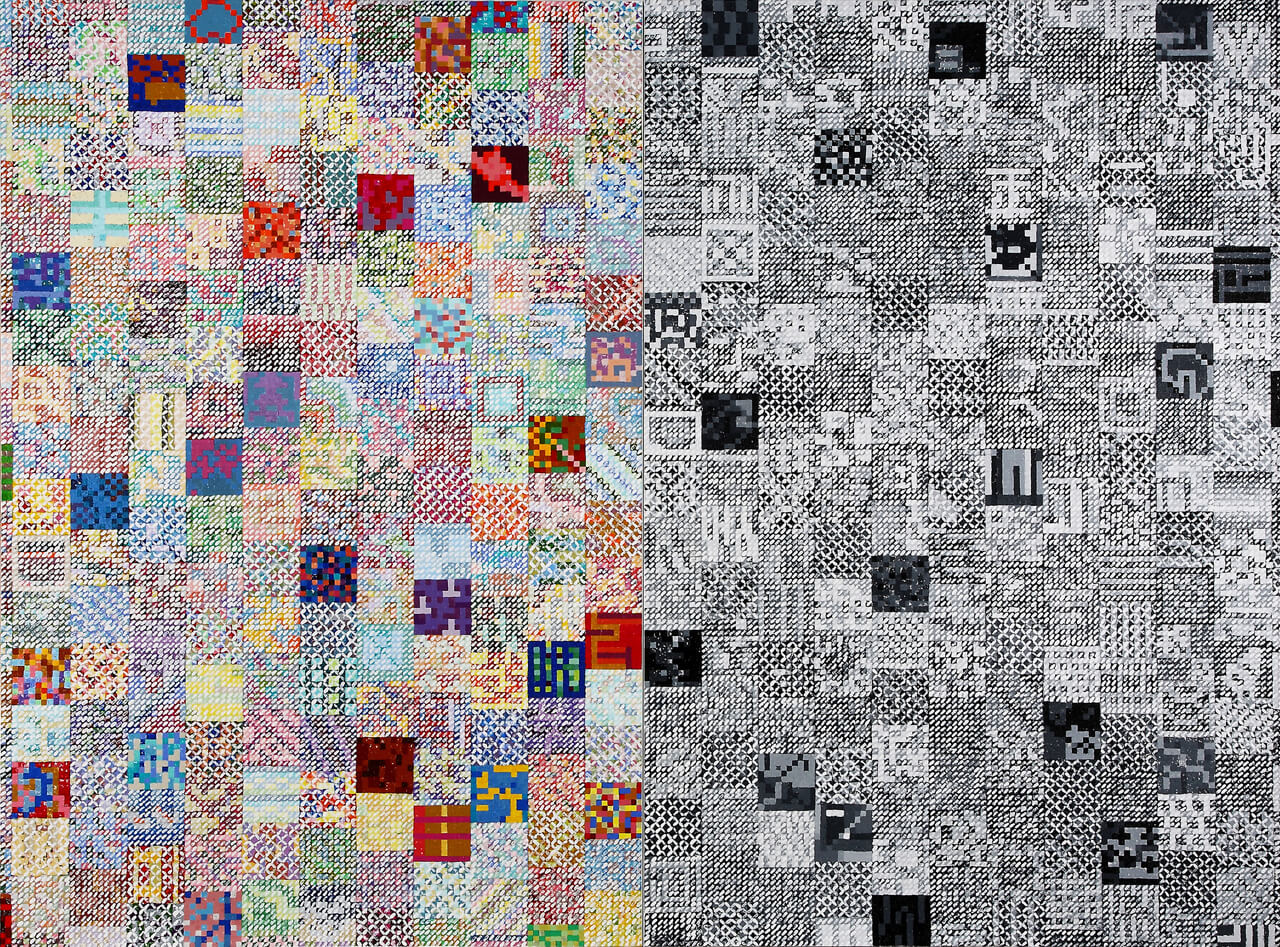|EXHIBITION
A Return to the Deep Forest, Time Forms a Settlement
Chang Li-Hao
Tsong Pu believes that abstract art has developed since the Second World War and has been classified by many as a past and outdated form. As a creator of Eastern abstract art, including well-known artists such as Zao Wou-Ki and Chu The-Chun, their works often have to be viewed as a combination of Abstractism and Eastern ink charm to be easily understood by viewers who may be a little narrow-minded. After all, no matter how times change, human beings still have the same seven emotions and six desires, only the way they are expressed may be slightly different. Therefore, after decades of working in the field of art, Tsong Pu always thinks about whether abstract painting still has new possibilities for interpretation, even if they are subtle changes. If so, how should it be expressed? Viewers may find some clues in the ten new works on display this time.
The most immediate and striking aspect is the more complex composition that has emerged with the use of more colors. This development is not just a matter of difficulty, but rather a reversal and reaction to the established belief of "from complex to simple," leading people to reconsider the dialectical relationship between complexity and purity. In addition, Tsong Pu deliberately added short lines other than imprints, creating a series of interwoven latitude and longitude coordinates. Although not pointing to a specific time or space, familiar scenes slowly emerge from the painting, recalling British painter Joseph Mallord William Turner's (1775-1851) successful use of watercolor to create works that emphasize atmosphere and mood. Natural rhythms and cadences emerge, like pastoral poetry, allowing viewers to repeat praise. For example, in the work " Jade Mountains and Pearl River," the viewer cannot help but imagine, after the suggestion of the title, a scene with towering mountains and rivers flowing down in thin white streams that then converge into a river that crosses the plain, like an imagined secluded paradise, la la land, rarely visited by humans.
The "Painter of Light" reflects a scene like sunlight shining through the clouds and sparkling on the water's surface, which is Tsong Pu's tribute to the great artist Joseph Mallord William Turner, who was adept at capturing the ever-changing climate and light of England. For Tsong Pu, Turner's approach was no longer to simply depict nature, but rather to deconstruct the concrete landscapes in order to present spiritual landscapes on the canvas. This is essentially the same as Abstract Expressionism, which emerged a century later and influenced many artists after Mark Rothko (1903-1970). This intergenerational confluence of artistic thought is, in a sense, the historical echo revealed in the film mentioned above, and it may exist in synchrony after passing through a wormhole, even if it is not necessarily understood in a way that humans are able to grasp at the moment.
However, Tsong Pu did not stop at this point. He made shapes, colors, and materials move, transmit, like decaying particles in the universe, constantly oscillating between sensory experience and rational thought to explore the essence of art. In his work "The Stars Last Night," for example, he used a technique similar to astrophotography to record the trajectory of stars in the night sky over a long period of time, revealing a simple and vivid poetry. However, the stripe of lighter gray on the left side of the painting unintentionally became the key to deciphering this romantic imagination. Similarly, in two pieces called "Invisible Layers of Scenery," while the dazzling gold came strongly to the fore, it also pointed out the layering characteristics of digital matrices, which were precise simulations, clearly indicating that all possible landscapes were only from the romantic imagination of the viewer. If there were any similarities, it was pure coincidence.
Perhaps, as the German philosopher Georg Wilhelm Friedrich Hegel (1770-1831), who lived in the same era as Turner, once said: "Art invites us to think, not to create new art, but to understand art in a philosophical way. " Their theories and practices coincide and have resonated through time and space for over a century and a half, including our present moment. This time, Tsong Pu enters the forest that has grown from fragments of his personal life experiences. Despite the many paths that diverge in the forest, in the distance, after passing through the dense woods, one can vaguely see the lights of the city still shining. But as the night grows darker, everything in front of us becomes more obscure and ambiguous, even creating a sense of disorientation. As it turns out, this deep forest is a settlement of time, with a history and memory that cannot be expressed in words. Art, of course, is also within it, waiting for us to dig deeper.
(Excerpt from Chang Li-Hao, A Return to the Deep Forest, Time Forms a Settlement)
+ Learn More
|M Show: BUY NOW|
|SOLO──Tsong Pu|
|
SOLO──Tsong Pu
|
+ Learn More
|m Space|
|Tsong Pu──The World Comes From “Something”|
⌈Every artist is keen to express himself/herself, insofar as to affect the majority viewpoint. Actually, it is little more than a utopian ideal of attempting the impossible or presenting something extremely onerous to present. Difficulties notwithstanding, I’m delighted to be the artist.|Tsong Pu⌋ |
⌈As far as I’m concerned, avant-garde is synonymous with subversion or revolution. Change your ways and you can change everything! Keep re-orientating yourself and you’ll blaze a trail!|Tsong Pu⌋ |
|
Tsong Pu──The World Comes From “Something”
|









